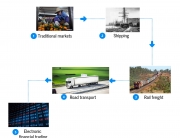https://www.youtube.com/watch?v=R9dXkdtGl_I ( warning: the video clip includes violence)
There has always been conflict, politically and in business activities. At this moment, the world is facing many challenges. How our political and business leaders and financial institutions deal with these challenges will profoundly affect the future of people in their business and personal lives. In the corporate sector there will certainly be corporate and debt restructurings. The outcome of any restructurings remains, of course, to be seen.
It is 50 years since the release of the film #EntertheDragon, featuring the renowned actor, Bruce Lee. What has this got to do with managing political, business and personal conflict? I am not a great follower of martial arts, but one sentence in the film is, for me, core to dealing with conflict. It is when Bruce Lee, when he is being provoked, is asked “what’s your style” and he replies “the art of fighting without fighting”. It raises the question of what can be done to avoid destructive conflict in the first place. Many of the conflicts we are witnessing could have been avoided by trying to develop an understanding of the objectives and concerns of parties to a potential conflict.
What we do know from history is that there will be economic cycles. These cycles are currently being exacerbated by deep disruptive changes in many business sectors, and heightened political tensions. So, where there are restructurings, there may be more extreme losses and loss of corporate value, and impact on employees, in the current economic cycle than in the past.
How conflict between the stakeholders in a restructuring is managed therefore becomes increasingly important. Constructive creative co-operative conflict to try find mutually acceptable solutions to all key stakeholders can often be healthy. Destructive conflict, by contrast, is toxic. Below are my thoughts on the principal issues to be considered to maximise the chances of reaching agreement in a restructuring that is mutually acceptable to the key stakeholders, and dealing with any restructurings in a humane and compassionate way
- Could the conflict have been avoided?
- Has there been adequate preparation for a possible conflict?
- How could the impact of any conflict be mitigated?
- What are their objectives?
- What are the areas for potential compromises and potential “non negotiable” issues?
- What is a realistic mutually acceptable outcome?
- What are the barriers to reach a mutually acceptable outcome?
- Are there potential tensions between people involved in the restructuring?
- What will be the human impact on people who are affected by the restructuring and can any adverse effects be mitigated?
Open, honest and constructive dialogue between key stakeholders is also vital to trying to finding acceptable solutions, even though there will be conflicting objectives in a restructuring.
What are your thoughts on avoiding, preparing and managing and mitigating potential conflicts?






Leave A Comment